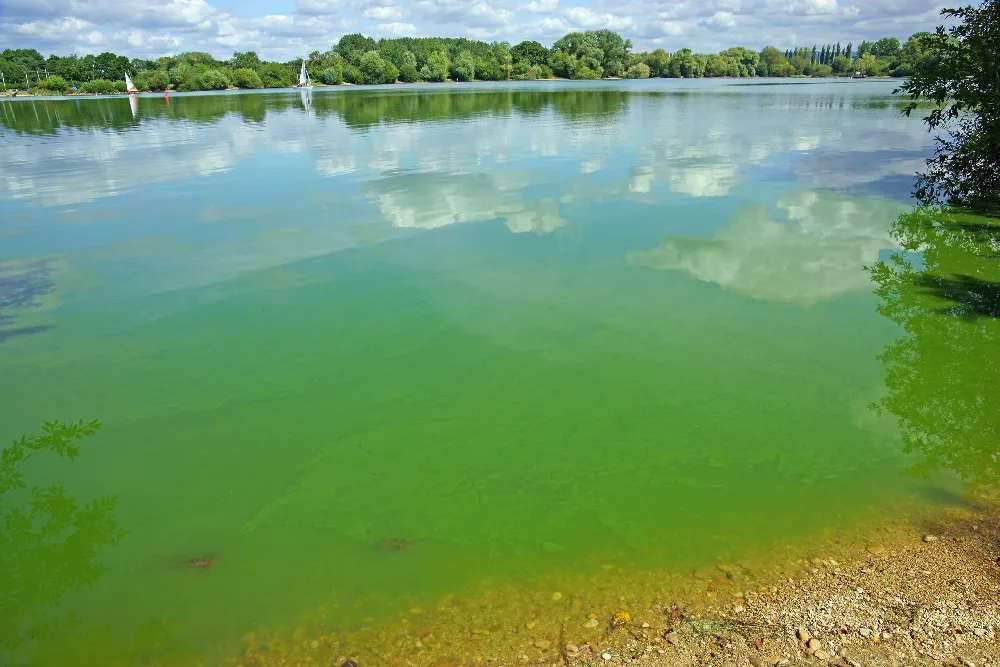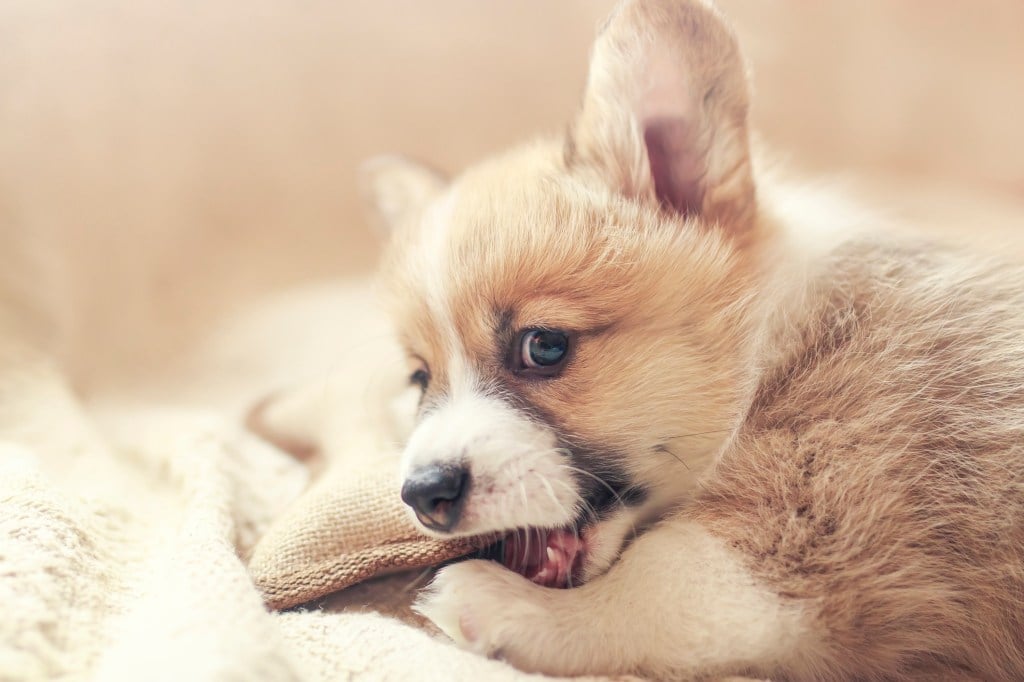Table of Contents
Especially now that it’s summer and the weather is warm, multiple stories are surfacing with a similar chain of events: the dog goes for a swim in the local pond or lake, enjoying the cool water on a hot day. After swimming to his heart’s content, happy dog and pet parent head home. But on the way home, the dog starts to act strangely, either vomiting, diarrhea, or seizures. Pet parent rushes their dog to the vet, but within a matter of hours, the dog passes.
Blue-green algae is highly toxic to dogs and people, and simply swimming in a body of water with blue-green algae puts the person or pet at serious risk of becoming fatally ill. Dogs are more susceptible to poisoning because they are more likely to drink the water or lick their wet fur after swimming.
How does blue-green algae harm a dog?
Toxic algae produces a neurotoxin “that can cause liver damage, lead to respiratory paralysis or produce other fatal conditions,” stated a recent New York Times article. As previously stated, initial symptoms may include vomiting, diarrhea, and seizures. Other symptoms may include weakness, difficulty breathing, disorientation, and collapse.
Toxic algae cases in the news
The New York Times article mentions that “the danger drew national attention in recent days after a woman in North Carolina lost her three dogs — Harpo, Abby and Izzy — after they had gone swimming in a pond.” Another recent article from NBC discusses recent toxic algae cases, including the North Carolina dogs as well as dogs in Texas and Georgia.
How to spot blue-green algae
Unfortunately, there are no remedies to counteract the effects of these toxins, so it’s important to watch out for affected waters and avoid them. If you suspect your dog swam in water contaminated with toxic algae, rinse them off immediately and get them to the vet.
Pet parents of water-loving dogs should familiarize themselves with the signs of toxic algae. Here’s what to look for:
- It may look like grains of floating green sand or scum
- May look like “pea soup”
- An appearance of paint or paint chips on the surface of the water
- Water smells bad
- Algae can also lurk under the water’s surface or attach to plants, making it harder to detect
When in doubt, stay out! It’s simply not worth taking such a high risk.
How to protect your pup from potentially dangerous waters
1. Look for signs or notices that may have been posted by local health authorities. You may also find information and updates on nearby lakes and ponds by following your local news outlets and park departments on social media.
2. Keep fresh water with you at all times so you can keep your dog hydrated. A thirsty dog may go for a sip of contaminated water before you are able to stop them.
3. Always rinse your pup with clean, fresh water after a swim in a lake or pond.
4. Be aware of the signs and symptoms of toxic algae ingestion:
- Vomiting
- Diarrhea
- Drooling
- Weakness
- Disorientation/confusion
- Seizures
- Difficulty breathing
Take your pet to the nearest veterinary hospital as soon as possible if you notice any of these signs.
Learn more about blue-green algae and find more photos at the Centre for Ecology & Hydrology.








